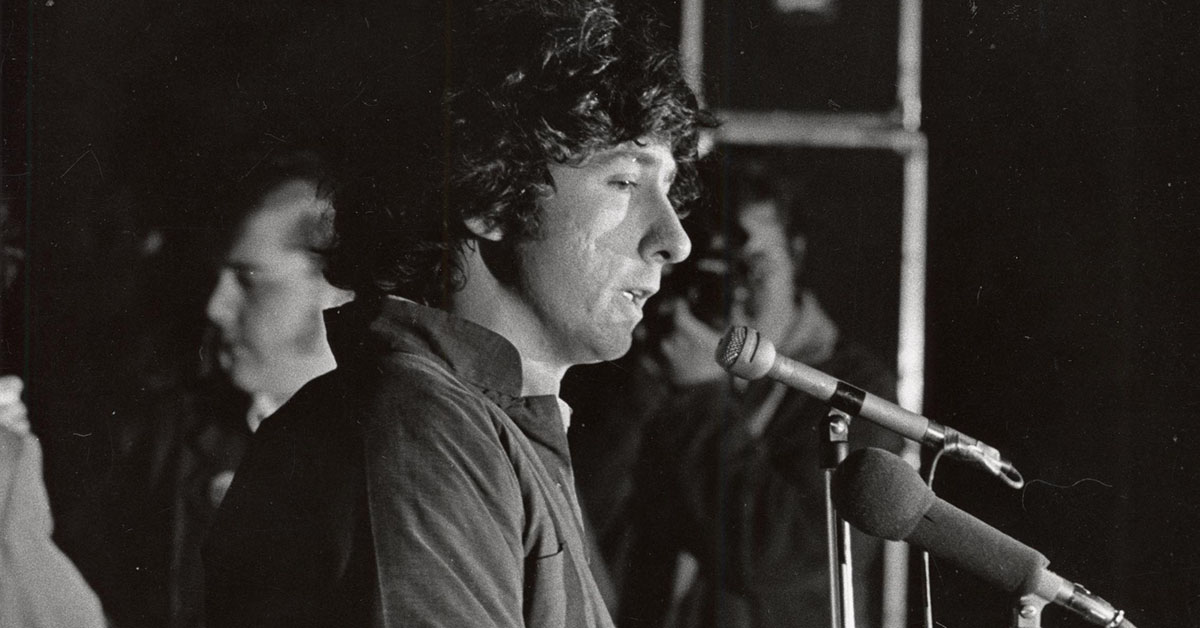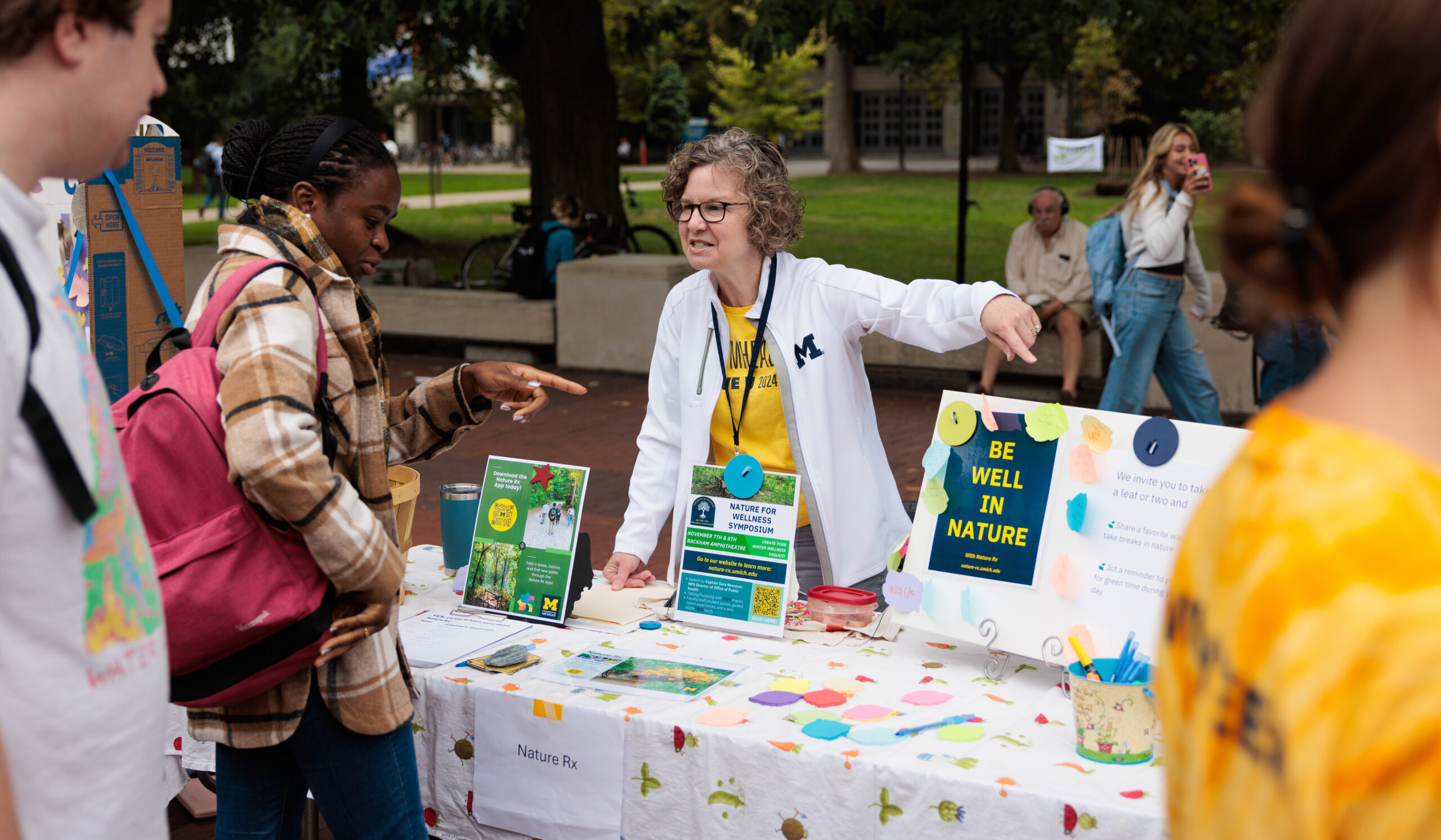When Tom Hayden, ’61, died in October, he left a legacy as a political activist with roots dating far back to his days at U-M. While at the University, he helped form Students for a Democratic Society (SDS). Hayden later served as primary author of the Port Huron Statement, the SDS manifesto that became the blueprint for the entire student movement of the 1960s. He also made important contributions to the Southern civil rights struggle and played a major role in many high-profile protests against the Vietnam War.
In the 1970s, Hayden became renowned internationally as a radical leader, particularly after marrying actress and fellow activist Jane Fonda (the two divorced in 1990). During the 1980s and 1990s, he went on to join mainstream politics, where he had a 20-year career as a Democrat in the California state legislature. His final role was working as the director of the Peace and Justice Resource Center in California.
Yet back in 1957, Hayden was just another freshman, arriving at U-M from Royal Oak, Mich., with a tennis scholarship. By his senior year in 1960, the English major had become the award-winning editor of The Michigan Daily.
Hayden’s thoughtful intelligence and earnest idealism are still remembered today by those who knew him back then in Ann Arbor.
Phil Power,’60: “He was one year behind me on the Daily when I met him, but was already distinguishing himself as an energetic and curious reporter, and showing all the charisma that he later displayed in so many different ways. He was a good reporter and a good writer, and people on the Daily thought well of him and admired him. He was lively and quick and very funny. And bright as hell. The last word that I would use to describe him is a nerd.”
Dave Giltrow, ’61, worked with Hayden as a member of Voice, a progressive campus political party that Hayden, Power, and others created in the fall of 1960. One of Voice’s early efforts was to help tenant farmers who had been evicted from their homes for attempting to vote in Fayette County, Tennessee. Giltrow remembers one occasion, in particular, when he and Hayden, with the assistance of the UAW, went to deliver food collected to the displaced farm families.
“The end of January, six Voice activists drove two cars to Tennessee to take them truckloads of food. The first car with four Voice members, including two Daily reporters, left Ann Arbor in the morning. Tom and I left around 10 p.m. driving Tom’s dad’s car, heading through Indiana and Kentucky for southern Tennessee. We spent a few days in several counties just east of Memphis and then drove to Nashville where we met local civil rights groups and participated in a demonstration against a downtown movie theater with segregated seating.”
Alan Haber, ’65, another founding force behind the SDS, first met Hayden in the fall of 1959. He recalls an important conversation between them right before Hayden graduated. “He was going to interview for a newspaper job in Washington to be a professional journalist. I went with him, and during that ride I persuaded him that, instead of doing that, he should be an organizer for SDS and do his journalism for the movement. We had a long drive to Washington, D.C., at the end of which he decided he would come on to the SDS staff as a Southern field organizer.”
John Dobbertin, ’64: “Tom Hayden was a teaching assistant in the journalism department. I had him for Law of the Press. Must have been my senior year, 1963-64. One Monday morning, Hayden came to class and announced, ‘You will have to rewrite your term papers. I was down South last weekend and someone broke into my car and took everything, including your papers.’ I never have investigated, but our papers are probably in some FBI file.”
Bob Ross, ’63: “I first met Tom when he covered the arrest of picketers in Ann Arbor who were calling for a boycott of Woolworth’s and Kresge stores in sympathy with the Southern sit-in movement for integration of lunch counters. I was a humble first year, arrested for—believe it or not—littering.” Ross soon became a leader in Voice and SDS.
Dick Flacks, PhD’63: “I was a graduate student in social psychology when Tom became editor of the Daily. He wrote a series of articles based on travels to California and the South, reporting on the rise of a student movement across the country and eloquently arguing that students across the planet were becoming important agents of change. I decided to go to a talk he gave on student social action. Astonished by his insights—he was then 22—and his vision, my wife and I traveled to Port Huron to participate in the founding of Students for a Democratic Society in June 1962 and worked with Tom for the next 50 years.”
Marjorie Maws, ’61: “I met Tom Hayden in 1958 when we were both at the Daily. He was on the editorial side while I worked across the room as associate business manager. I couldn’t help but notice the much more passionate involvement of the editorial team. It was Tom who lit them on fire. I didn’t have the slightest hint of a social conscience and was much more interested in sorority life. But being within earshot of Tom’s intensity changed all that. Pretty soon I bought a green book bag and picketed Woolworth’s.”
Steve Stockmeyer, ’64, was a leader of the U-M Young Republicans when he knew Hayden. “I was never close to him, nor did we socialize. Having said that, I was well aware of him and dealt with his legacy on the SGC and in dealing with The Michigan Daily. He was a very intense, intelligent, and controversial person whose leadership and personality earned him a devoted following. We had many differences, but were in concert when it came to challenging the university’s in loco parentis stance and regulations, as well as rooting out discrimination in the Greek system on campus.”
Bill Gamson, MA’56, PhD’60, husband of Zelda Gamson: “It was September 1962 when I returned to Ann Arbor as an assistant professor in the sociology department. I taught a political sociology seminar that fall, and several of the participants from the Port Huron meeting in June 1962 showed up in my class. But I particularly remember Tom. We spent a lot of time in the seminar on the civil rights movement, and I was impressed that he knew a lot and that his knowledge was nuanced and complex. I remember feeling that I was learning from this student whom I was supposed to be teaching (being six or seven years older). The lesson I was learning was about how a commitment to actively working for social justice did not imply a simple view of the world.”
Zelda Gamson, ’58, MA’59, wife of Bill Gamson, remembers being surprised to see Hayden at a campus dance. It was “a party atmosphere without any politics involved. I was a married woman in my late 20s and wandered in to see what was going on. There was Tom. We said hello, talked a bit. Then the music came on and I saw other people dancing in a way I didn’t recognize. I’m a good dancer, so I wanted to dance like them. I asked Tom what the dance was called. He said it was the Frug, which I thought funny—although maybe not funnier than the Jitterbug, which I did. He faced me and started to move to the music. So I joined him.”
Alan Glenn is president of the Michigan History Project, a 501(c)(3) educational organization based in Ann Arbor. Visit michiganhistoryproject.org for more information.





